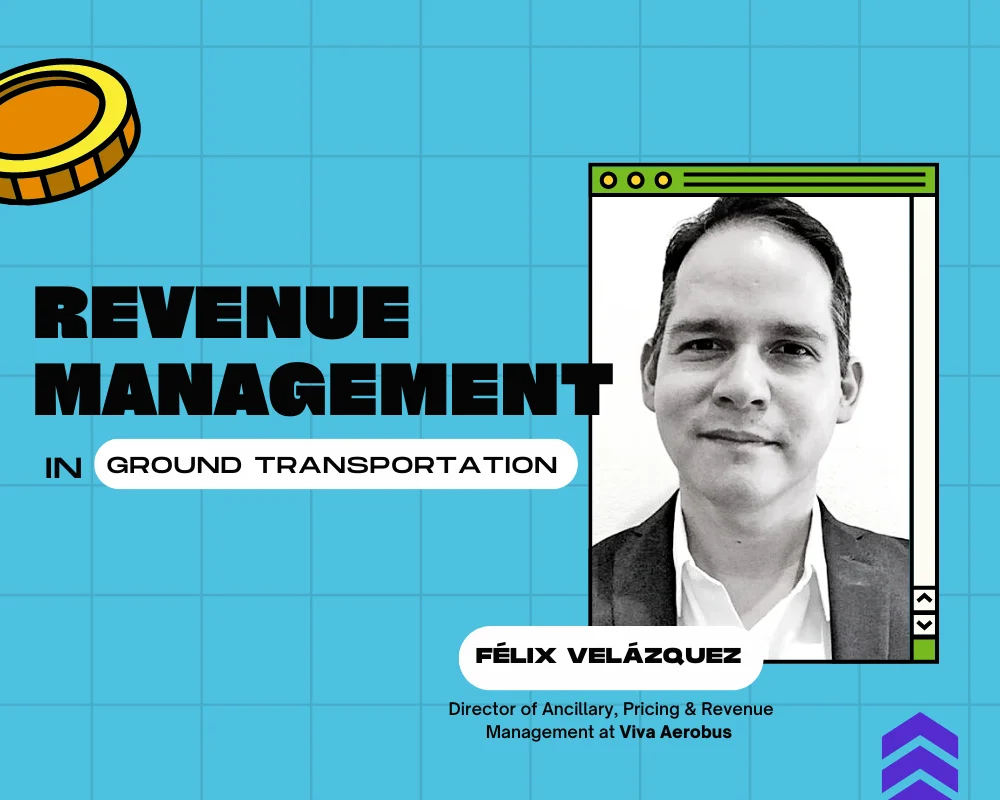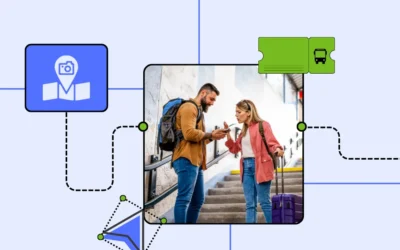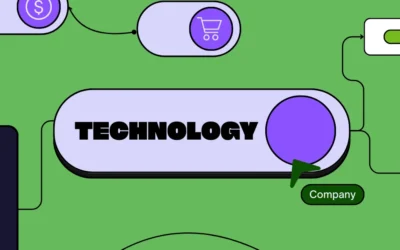Technology is essential for revenue development and management, and its use is directly proportional to business outcomes. – Félix Velázquez, Director of Ancillary, Pricing, and Revenue Management at Viva Aerobus.
Félix Velázquez is a member of the Reservamos Advisory Board and also serves as the Director of Ancillary, Pricing, and Revenue Management at Viva Aerobus, a Mexican low-cost airline.
Based on his extensive experience in Revenue Management, low-cost companies, and Ancillaries, we spoke with Félix to learn about his vision of how technology can be a determining factor in analyzing data, segmenting travelers, understanding the market better, and developing strategies that allow for increasing the profitability of companies.
What is your vision in 10 years regarding pricing strategy in the ground transportation industry?
I believe that the ground transportation industry can transition to three different pricing strategies:
- Dynamic pricing (already in the adoption phase).
- Unbundled services, such as seat selection or even baggage.
- Membership or subscription models.
What do you think are the most relevant challenges and benefits when implementing an ancillary-based strategy, and how does it compare to the traditional approach of ticket pricing?
The most relevant challenges of an ancillary or additional services strategy would be its adoption as a consumption model, its merchandising and execution within bus terminals. I see these three challenges as a cycle that reinforces or weakens each other depending on how it is executed.
Adoption as a consumption model is particularly challenging because disaggregating services can be perceived as “charging for everything.” Customers in the sector are not accustomed to hyper-personalizing their journey. Therefore, there may be initial resistance to adopting this model.
On the other hand, delivering the different components of this service can be a complex task, as different products will be offered at different stages of the purchase. Products such as seat selection and baggage, for example, should be offered digitally during the purchase. These services could also be offered post-purchase but before the travel date through digital means.
Lastly, additional services can be offered at the ticket counter on the day of travel. The complexity lies in aligning the entire organization with this model. Ticket counter staff must be familiar with all products offered digitally to ensure that the customer travels only with what they need.
In contrast, the benefits of this model are the ability to generate more optimal revenue for the company by alleviating pressure on fares, incentivizing occupancy, and allowing the customer to pay only for what they need. It can become a virtuous circle that allows for market growth through low fares and additional trips. Ultimately, the more trips a bus or plane makes, the lower its fixed costs become, which helps to continue offering low fares.
How are revenue management practices and income management adapting in the current context of the passenger transportation industry? What strategic adjustments have been made at Viva Aerobus to address these changes?
I would divide the adaptation of revenue management practices in passenger transportation into two categories: ground transportation and air transportation. Additionally, both sectors are at different levels of maturity in adopting these practices.
Ground transportation is in the adoption phase, where the concept of advance purchase is permeating customer consumption habits. Furthermore, this industry is also shifting a greater share of its sales to digital channels, although ticket sales at counters still hold the greatest relevance in terms of revenue for the ground transportation sector.
Air transportation, which has been using revenue management practices for several years, is transitioning to a phase of greater granularity in pricing and automation. Previously, there were many prices for a single flight; now, we find a variety of prices for additional services such as baggage, seat selection, or travel insurance. Ultimately, the determination of these prices for additional services is based on the attributes of the customer quoting a trip and is executed in real-time.
What is the role of data analysis and traveler segmentation in a revenue management strategy? How are these insights used to make informed decisions and improve profitability?
Data analysis and traveler segmentation play a crucial role in implementing revenue management strategies. The synthesis of purchase data always leads to a demand curve. When we talk about seats on a flight or a bus trip, we are always selling a perishable item. Therefore, knowing at what price we can get a customer to purchase, what additional services they are willing to acquire, and how many seats are still available is essential to finding the optimal revenue for each flight or bus trip.
On the other hand, the observed prices, or price points, in the different demand curves are used at an aggregate level to make profitability decisions. In other words, since there are several price levels at which customers are willing to purchase a flight or bus trip, it is most appropriate to use the average of those prices weighted by the proportion of total customers who paid it to arrive at the average revenue necessary to achieve profitability.
How does technology influence revenue development and management? What should be considered when choosing tools or systems to monitor, analyze, and optimize additional revenue opportunities?
Technology is essential for revenue development and management, and its use is directly proportional to business outcomes. Cost-saving initiatives will always be fewer in number compared to the number of price experiments that can be conducted. No matter how small an operation is, whether it’s a few bus trips or flights, if you have systems that are at least capable of changing prices based on some parameter, there will always be opportunities to improve results by increasing revenue.
When it comes to factors to consider when choosing tools, I believe usability is a more relevant factor than the science behind the decision-making process. Pricing decisions are enriched by the number of data points that make up our demand curve. Therefore, the more prices we experiment with, the more accurate the models will be in predicting at what level we will “close the sale.” Additionally, the ability to extract and organize information on the performance of the offered prices is also indispensable. In the words of Peter Drucker, a scholar in the field of management, “What gets measured gets managed,” so information extraction is fundamental for an optimal revenue maximization strategy.
Get to know all the members of the Reservamos Advisory Board and discover the expert voices that guide our path every day, towards becoming the technological ally for any bus company.




